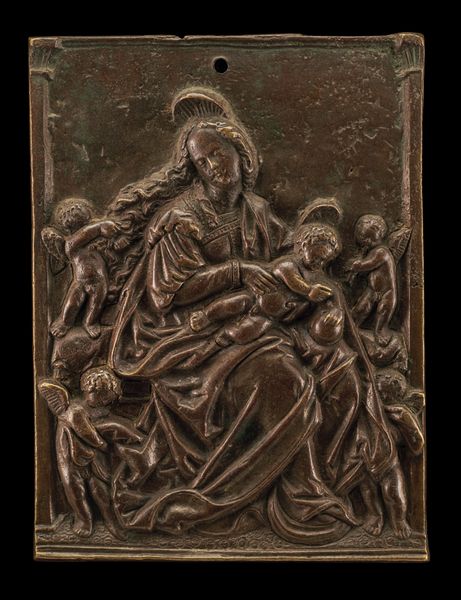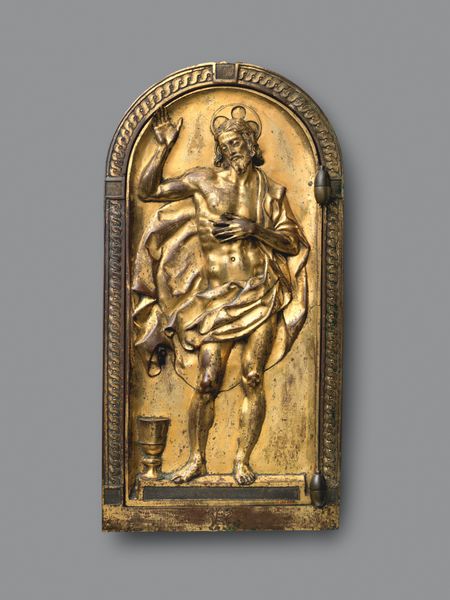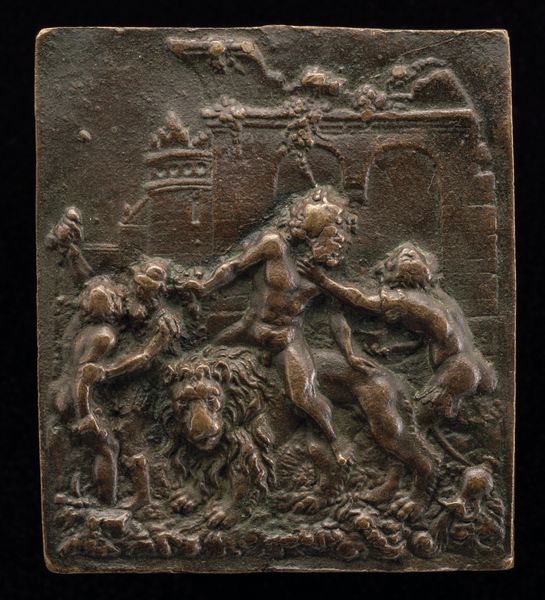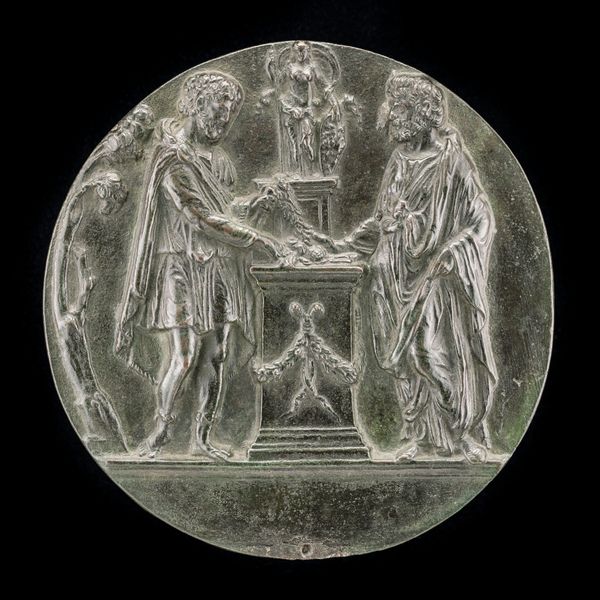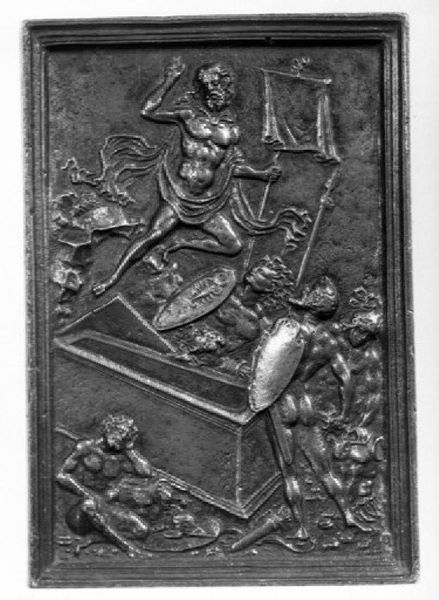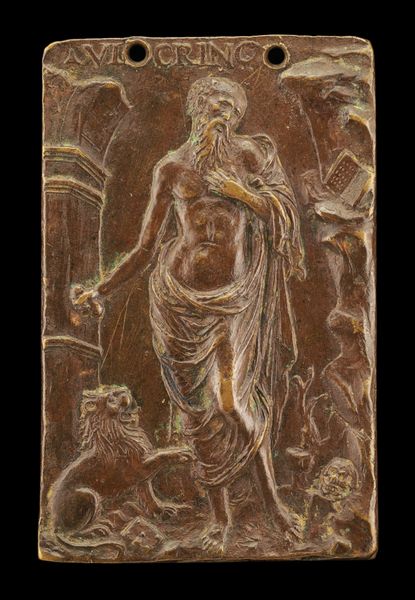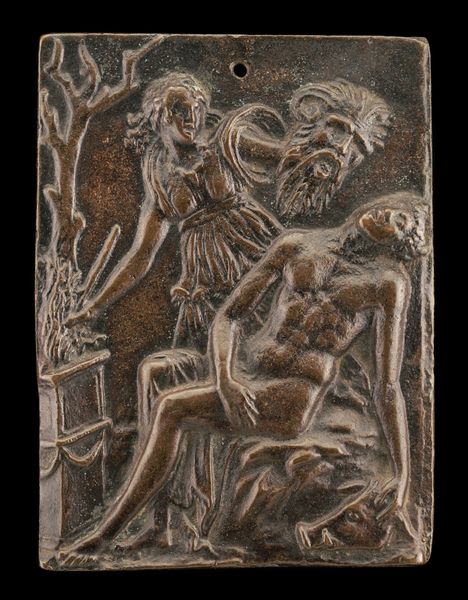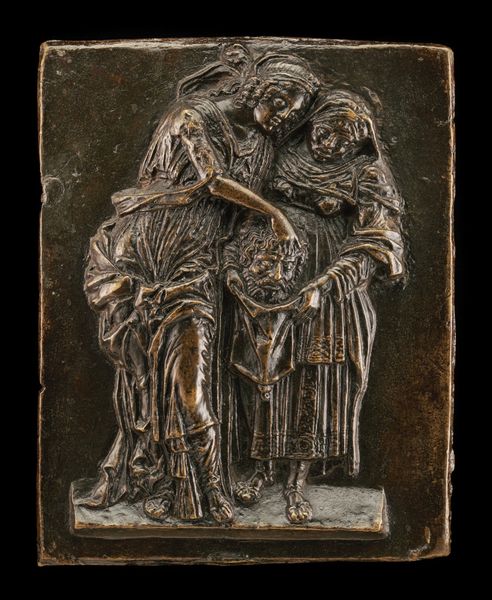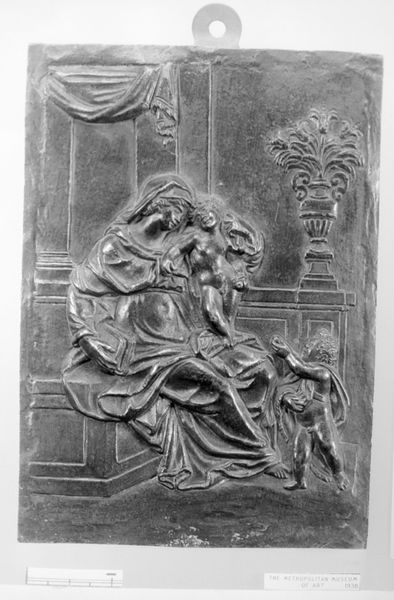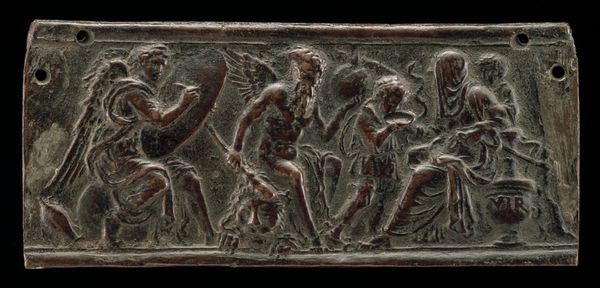
relief, sculpture, marble
#
narrative-art
#
sculpture
#
relief
#
classical-realism
#
figuration
#
sculpture
#
history-painting
#
marble
#
italian-renaissance
Dimensions: overall: 8.7 x 6.7 cm (3 3/8 x 2 5/8 in.) gross weight: 85 gr
Copyright: National Gallery of Art: CC0 1.0
Editor: This marble relief, “Charity,” made around 1540-1545 by Peter Flötner, is fascinating. The textures seem rough yet refined at the same time, and I’m intrigued by the weight the materiality brings to such an ethereal concept. What stands out to you in this piece? Curator: The most compelling aspect of "Charity" lies in its marble form, considering its creation amidst the economic shifts of the Renaissance. Marble, once a symbol of affluence controlled by elite workshops, its access starts democratizing. Note the deliberate contrast between classical ideals represented in form versus the increasing mercantile values of the Renaissance. Does Flötner critique or celebrate the shift? Editor: That's a fantastic point! So, the accessibility of the marble itself plays into our understanding of "Charity?" It becomes less about pure, selfless giving and more about the societal structures allowing or even compelling such acts? Curator: Precisely. Think about the labor involved—quarrying, transporting, carving. Who benefits from that labor, and under what conditions was it extracted? Are the children depicted representative of vulnerable groups impacted by changes in material wealth? Flötner compels us to look past surface level interpretation. Editor: I never considered the actual labor aspect beyond the artist themselves. The democratization of materials forces us to analyze the socio-economic environment impacting its production. This really flips my understanding of not only this work, but of Renaissance sculpture in general. Curator: And how does that perspective shape your understanding of charity itself as a social function tied to production and access? Editor: I now see charity as way more than just a virtue! Thanks to understanding the production of the marble relief itself, charity transforms into a cultural product deeply interwoven with labor and resources, expanding our concept of value in art and society.
Comments
No comments
Be the first to comment and join the conversation on the ultimate creative platform.


